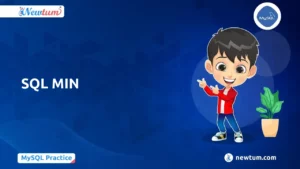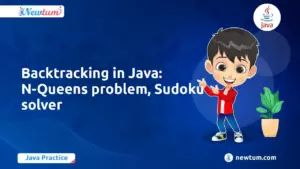Are you new to coding and wondering how computers understand the text we type? Welcome to a beginner-friendly dive into ‘Binary to ASCII Conversion in Java’. This process might sound daunting at first, but it’s crucial for developers. Why? Computers speak in binary, a series of 0s and 1s, but we, humans, communicate using text. To bridge this gap, conversion is key. Imagine turning secret computer code into readable text—fascinating, right? Stick around, and you’ll learn how Java makes this conversion a breeze, empowering you to unravel digital mysteries with ease! Ready to turn bits into words? Let’s get started!
Code Example for Converting Binary to ASCII in Java
public class BinaryToAsciiConversion {
public static void main(String[] args) {
String binaryString = "01001000 01100101 01101100 01101100 01101111"; // Binary for "Hello"
String asciiString = binaryToAscii(binaryString);
System.out.println("ASCII Result: " + asciiString);
}
public static String binaryToAscii(String binaryStr) {
StringBuilder ascii = new StringBuilder();
// Split the binary string into an array of binary numbers
String[] binaryValues = binaryStr.split(" ");
// Convert each binary number to an ASCII character
for (String binaryValue : binaryValues) {
int charCode = Integer.parseInt(binaryValue, 2);
ascii.append((char) charCode);
}
return ascii.toString();
}
}
Explanation of the Code
Below is a simple Java program that demonstrates Binary to ASCII Conversion in Java. Let’s break it down for you:
- Main Method: The main method initiates the process. We define a binary string that represents the word “Hello” and call a method to convert it to ASCII.
- Binary to ASCII Method: We have a method ‘binaryToAscii’ that accepts a binary string.
– String Builder: It creates a mutable sequence of characters, which is handy here.
– Splitting: The binary string is split into individual binary numbers for each character. - Loop Through Binary Values: Using a ‘for’ loop, each binary number is parsed into an integer with base 2, then it’s converted to its corresponding ASCII character and added to our result.
- Return the Result: After the loop, the method returns a string containing the ASCII message.
Output
ASCII Result: HelloReal-Life Uses of Binary to ASCII Conversion in Java
When it comes to computer science, there are many fascinating processes. One of these is the conversion of binary to ASCII in Java, an essential skill for many developers. Here’s why:
- Data Transmission:
In modern communication systems, data often needs to be transmitted over networks. Binary to ASCII conversion enables data to be sent in a human-readable format or back into binary for processing. It’s especially useful in error-checking and ensuring the integrity of data during transmission. - File Encoding:
Files are often stored in binary format on disk. When you want to work with text files, you need to convert this binary data into ASCII. This conversion is crucial when dealing with file input/output operations in Java applications. - System Programming:
System logs and configuration files often contain binary data. By converting it to ASCII, developers can make sense of the data and perform necessary debugging or updates. - Data Serialization:
Converting complex objects into a string format (ASCII) is essential in scenarios where data persistence is needed, such as saving the state of an application. ASCII encoding ensures the data is in a standard format. - Security Systems:
In cybersecurity, protocols often employ binary to ASCII conversion to ensure secure and readable data exchanges. Java applications, particularly in encryption, utilize these conversions to manage encoded messages
Top Interview Questions on Binary to ASCII Conversion in Java
- What is the purpose of Binary to ASCII conversion? Data readability and interpretability by humans.
- How is a single ASCII character represented in binary? Using 8 bits (1 byte).
- Which Java method can convert a binary string to an integer? Integer.parseInt with base 2.
- What exception should be handled during conversion? NumberFormatException.
- Why use StringBuilder in the Java conversion process For efficient string concatenation.
Conclusion
In wrapping up, binary to ASCII conversion in Java gives you the ability to breathe life into complex binary data, making it accessible and meaningful. With practice, you transition from mystified to mastery. Why not take the plunge and convert some binary today?
Visit Newtum for more insights and tutorials. Keep exploring, coding, and conquering! Ready to take on the next coding challenge? Go for it!
Edited and Compiled by
This blog was compiled and edited by Rasika Deshpande, who has over 4 years of experience in content creation. She’s passionate about helping beginners understand technical topics in a more interactive way.



